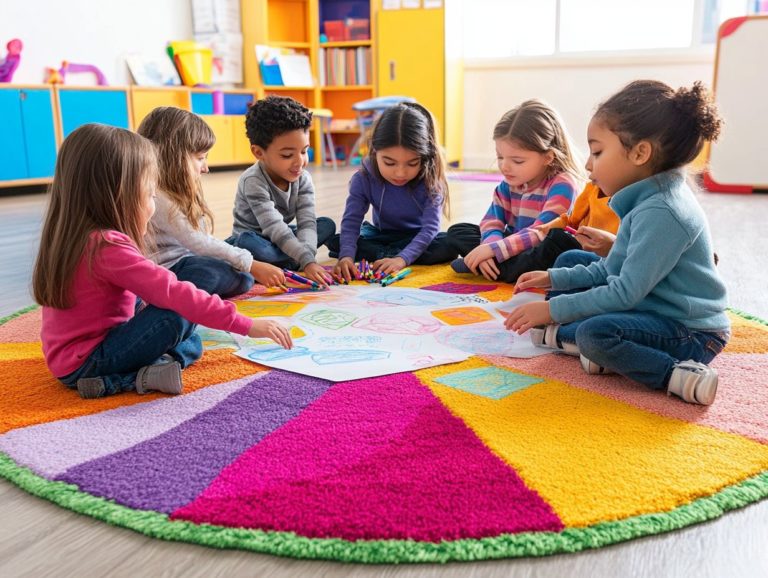How to Help Kids Cope with Emotional Changes
Emotional changes are an inherent aspect of childhood development, presenting unique challenges for both children and parents. Grasping the common emotional shifts that kids experience, along with the underlying causes, is essential for nurturing their resilience and emotional intelligence.
Discover effective strategies that empower children to navigate their feelings! Emphasizing the importance of cultivating a supportive environment and teaching them valuable coping mechanisms will make a significant difference.
This article also highlights key indicators that signal when a child may require additional support. Ensuring they receive the care and attention they truly deserve will help prevent potential behavioral problems.
Contents
- Understanding Emotional Changes in Children
- How to Help Children Cope with Emotional Changes
- How to Recognize When a Child Needs Extra Support
- 4. Self-Harm or Harmful Thoughts
- Frequently Asked Questions
- What are emotional changes and how do they affect kids?
- How can parents recognize emotional changes in their child?
- How can parents help their child cope with emotional changes?
- Is it normal for kids to experience emotional changes?
- How can parents address emotional changes during puberty?
- What resources are available to help kids cope with emotional changes?
Key Takeaways:
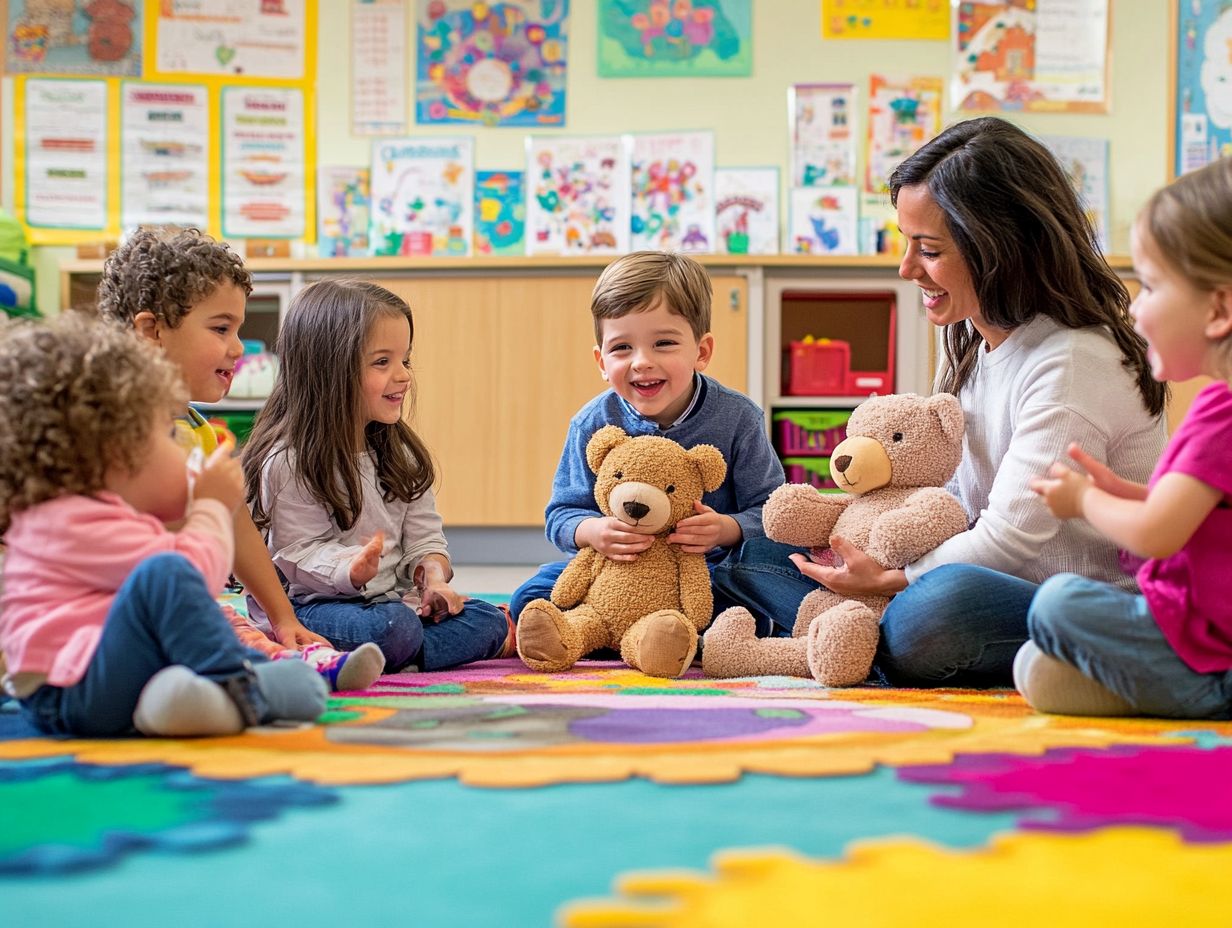
- Create a safe and supportive environment for children to cope with emotional changes by using calming techniques.
- Encourage open communication to help children express their feelings, aiding in emotional learning.
- Teach coping mechanisms and validate emotions to help children manage and process their feelings.
Understanding Emotional Changes in Children
Understanding emotional changes in children is vital for parents and caregivers. This knowledge helps when navigating the intricate journey of childhood development.
Emotions significantly shape a child’s experiences and reactions. Noteworthy shifts occur throughout various developmental stages.
Children, especially toddlers, experience emotional fluctuations. These can range from joy to frustration and distress.
By recognizing these emotional transitions and primary emotions, you can provide the necessary support for your child to manage their feelings and cultivate emotional intelligence.
Mastering the ability to manage emotions is key to helping your child cope with challenges. It also aids in learning empathy and developing strong social skills that will benefit them for a lifetime.
This includes being able to identify emotions and react appropriately.
What are Common Emotional Changes in Children?
As you observe children, you ll notice they often experience a range of emotional fluctuations. These range from happiness and sadness to anger, fear, and excitement, all of which come into play as they navigate their environments.
These primary emotions are the foundation of their emotional experiences, shaping the way they interact with peers, family, and the wider world.
For example, when a child achieves something new, their happiness is palpable, manifesting in giggles and boundless enthusiasm. On the flip side, sadness may emerge in the wake of loss or disappointment, leading to tears and withdrawal.
Recognizing these patterns can aid in better behavior management. Frustrations, like losing a game, can spark anger, resulting in outbursts or tantrums.
Conversely, fear might rear its head during unfamiliar or threatening situations, causing a child to cling closely to a familiar figure or hesitate to explore.
As they mature, children also start to experience secondary emotions. These develop as responses to their primary feelings.
For instance, feeling shame after expressing anger might inhibit their willingness to communicate openly. Meanwhile, a sense of pride can blossom from a moment of accomplishment.
These secondary emotions often require more nuanced coping strategies. Grasping these emotional layers is essential for fostering emotional growth and addressing potential behavioral challenges, ensuring children develop healthy emotional reactions.
What Causes Emotional Changes in Children?
Emotional changes in children can be shaped by a variety of influences, such as environmental stressors, parental behavior, and developmental milestones. These factors often lead to a spectrum of emotional responses, including anxiety, fear, and sadness, which are common negative emotions.
You ll find that these emotional fluctuations frequently reflect the dynamics of their surroundings, particularly since children are keen observers, often imitating the behavior of their caregivers. For example, how you respond to challenging situations sets the tone for your child s approach to stress, helping them navigate emotions like anger or frustration. Major life events, such as moving to a new home, starting school, or facing family issues, can also stir up significant emotional turbulence. Proper expectations and problem-solving approaches can assist in managing these fluctuations.
By grasping the intricacies of these influences, you can nurture healthier emotional expressions in your child, equipping them with effective coping strategies that foster resilience and emotional well-being.
How to Help Children Cope with Emotional Changes
Helping children navigate their emotional changes is crucial for their emotional growth and overall well-being. As a parent, you have the opportunity to use various coping strategies that validate their feelings and bolster their ability to regulate emotions through effective communication and awareness.
1. Create a Safe and Supportive Environment for Emotional Growth
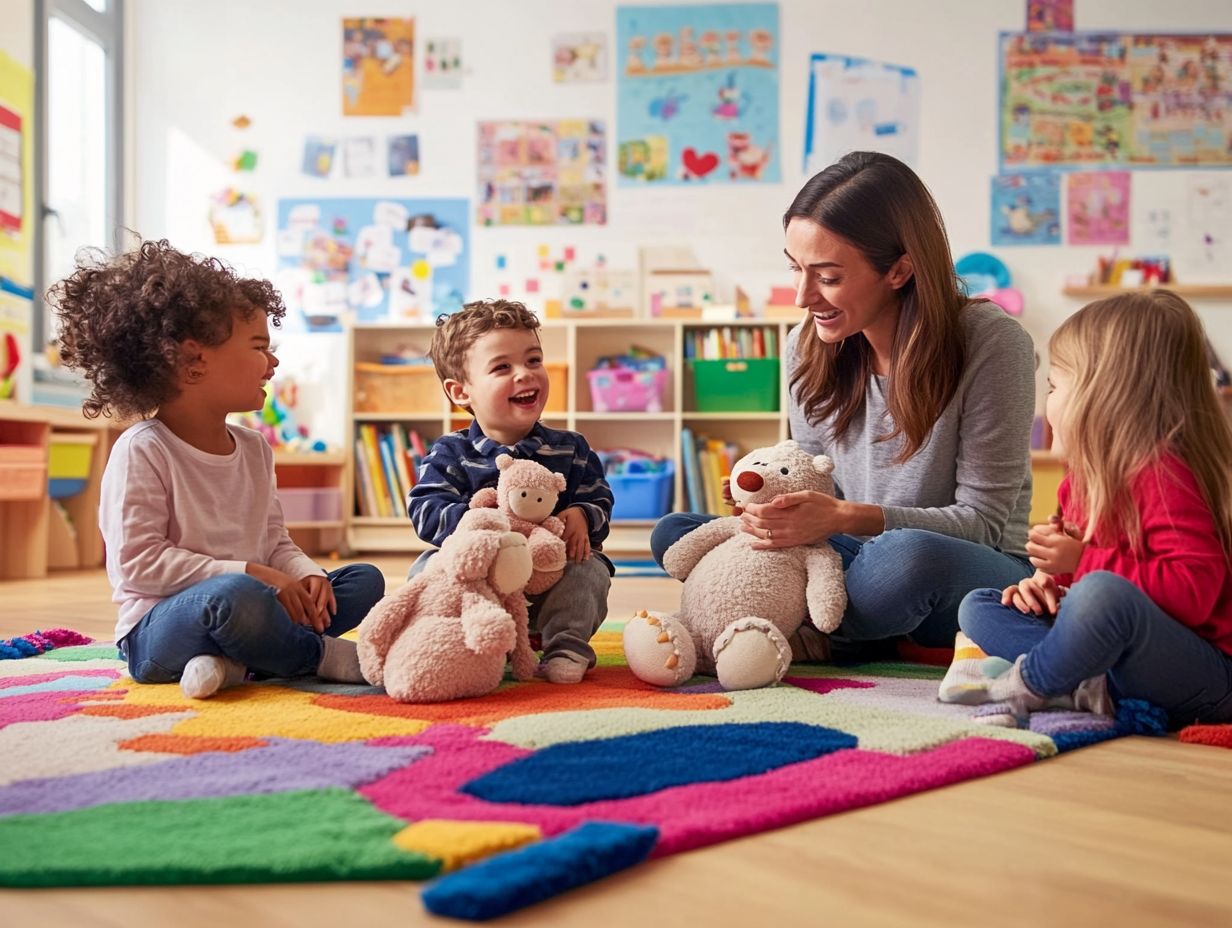
Creating a safe and supportive environment is essential for allowing your child to explore their emotions freely. Engaging in activities like play songs can also help regulate emotions.
When children are raised in a space that promotes open expression, they are far more likely to develop healthy coping mechanisms during challenging times. It is vital for you to remain attuned to your child’s feelings, offering empathy and guidance when distress arises. This modeling of behavior is key to teaching these coping mechanisms.
Encouraging open dialogues about emotions fosters a profound sense of security. Simple strategies, like establishing designated calm-down spaces where your child can retreat and process their feelings, or using storytelling to introduce different emotions, can significantly enrich their emotional toolkit.
By modeling self-soothing techniques, such as deep breathing or counting to ten, and sharing healthy coping methods, you not only provide support but also enable your child to manage their emotions effectively.
2. Encourage Open Communication
Encouraging open communication is essential for helping your child articulate their feelings and emotions. This allows you to validate those feelings and promote emotional understanding through empathy.
Creating a safe and nurturing environment sets the stage for your child to express themselves freely, without the fear of judgment. Make it a priority to listen actively to your child, sending a powerful message that their thoughts and emotions truly matter.
Using techniques like repeating back what your child says or asking open-ended questions can enable them to explore their feelings more deeply. Acknowledging their emotions whether sadness, anger, or joy reinforces the notion that all feelings are valid.
This practice not only enhances your child’s emotional intelligence but also strengthens the bond between you two, fostering deeper connections and trust.
3. Teach Coping Mechanisms
Teaching children effective ways to handle emotions equips them with vital skills to manage strong feelings and respond appropriately to stressful situations. This enhances their ability to self-regulate their emotions. Incorporating strategies to cope in advance can be particularly useful.
By fostering these skills from a young age, you enable your children to navigate life’s challenges with greater confidence and resilience. Various behavior management tactics can be introduced, tailored to your child s developmental stage. For instance, younger children might find visual charts helpful for identifying their feelings.
On the other hand, older kids could benefit from mindfulness techniques, such as deep breathing exercises or journaling to reflect on their emotions and improve their self-regulation. Consistently incorporating these strategies into daily routines not only aids in managing stress but also cultivates a nurturing environment where your children feel valued and understood.
4. Validate Their Feelings
Validating children’s feelings is essential for their emotional development. It nurtures an awareness and acceptance of their emotional experiences, ultimately reinforcing their ability to manage feelings effectively.
When you take the time to acknowledge your child’s feelings, you help them feel understood and enable them to express themselves with greater confidence. For example, if your child is upset about losing a favorite toy, you might say, “I can see how much that toy meant to you. It s okay to feel sad.”
This approach not only normalizes their emotions but also illustrates that being vulnerable is perfectly acceptable. This is a crucial step in emotional development. By providing a safe space where children know their feelings will be respected, you encourage them to share their experiences openly.
This lays the groundwork for healthy emotional communication as they mature, setting them up for success in navigating their feelings throughout life.
5. Seek Professional Help if Needed
When your child’s emotional ups and downs escalate into severe issues, seeking professional help can unlock the support and strategies needed for both your child and yourself as a parent.
Recognizing the signs of distress is vital for timely intervention. Typical childhood anxieties may morph into persistent challenges like extreme mood swings, withdrawal from friends or activities, or a noticeable decline in academic performance. Professional help can provide the necessary emotional support and strategies.
If you notice concerning changes, act now! Seek professional guidance to help your child thrive. This proactive step can change your child’s journey for the better, ensuring they receive the emotional support necessary to navigate their challenges.
When reaching out, clearly articulate your observations to the professionals. They will usually begin with an assessment, which often leads to customized strategies that enable both you and your child to cope effectively with emotional hurdles and behavioral challenges.
How to Recognize When a Child Needs Extra Support
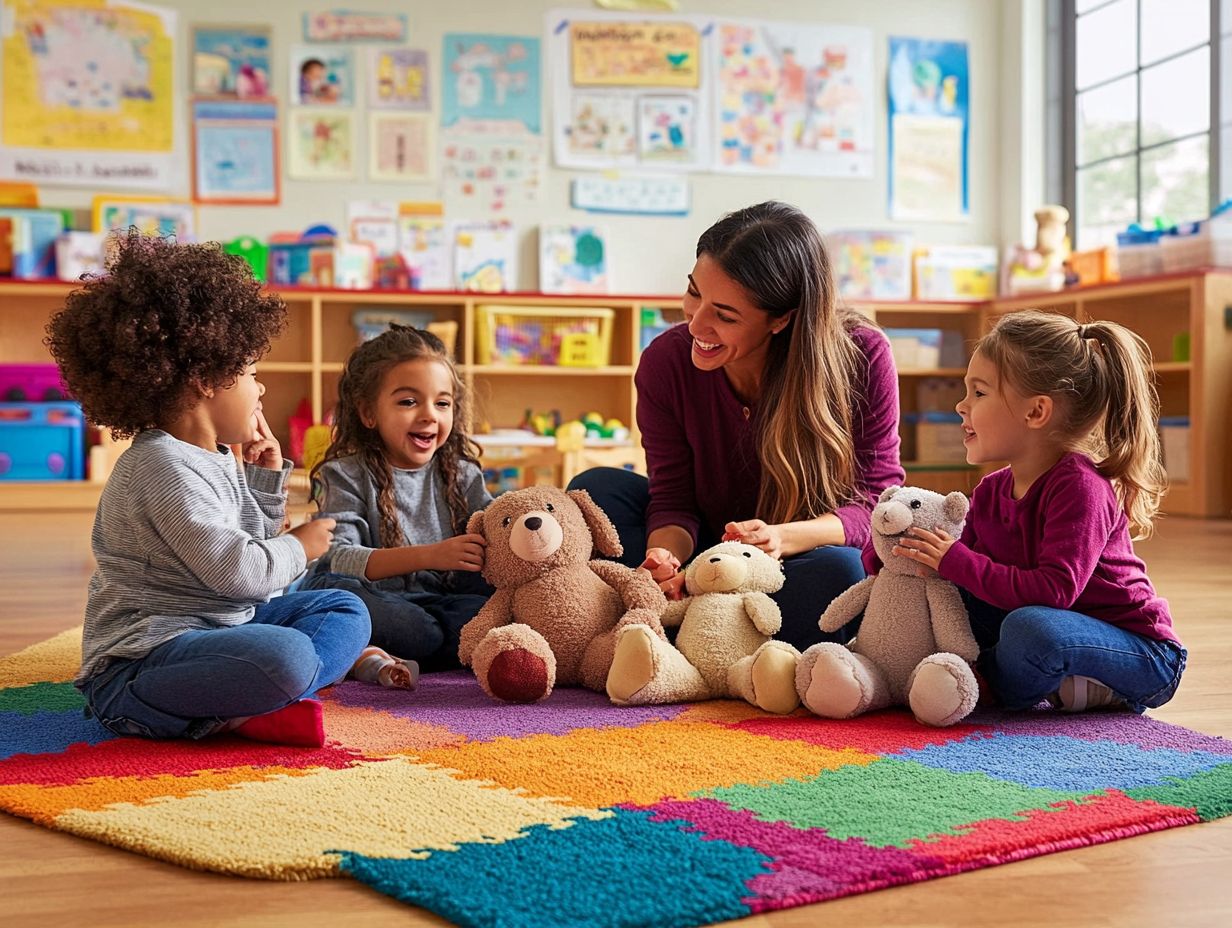
Recognizing when your child requires additional support is crucial. Persistent emotional fluctuations and behavioral challenges may indicate underlying issues that need your attention and intervention.
These issues may include difficulties in emotional regulation and self-regulation. By being attuned to these signs, you can take proactive steps to ensure your child receives the help they need to thrive.
This involves understanding their emotional experiences and fostering emotional intelligence.
In conclusion, supporting your child’s emotional well-being is essential for their growth and development. By teaching coping mechanisms, validating feelings, and seeking professional help when necessary, you pave the way for a brighter future.
1. Persistent Changes in Mood and Behavior
Persistent changes in a child’s mood and behavior often serve as red flags, signaling the possibility of emotional dysregulation. This condition may manifest through prolonged sadness, anger, frustration, or other negative emotions.
It’s essential for you to pay close attention to the frequency, duration, and intensity of these mood changes, as they might point to underlying issues such as anxiety, trauma, or stress. As a caregiver or educator, you have the opportunity to observe specific triggers that precede these emotional shifts. Take note of whether these changes coincide with particular situations, social interactions, or developmental stages; doing so can provide you with valuable insights.
Understanding the root causes behind these emotional fluctuations is crucial in addressing them effectively. This knowledge allows you to develop tailored coping strategies and calming techniques. Additionally, learning how to help kids deal with emotional pressure and seeking appropriate emotional support, such as counseling or therapy, can significantly assist the child in navigating their feelings and enhancing their emotional well-being.
2. Difficulty Functioning in Daily Activities
When a child struggles to engage in daily activities like school or play, it might signal that their emotional distress is significantly affecting their overall well-being. Issues such as tantrums, meltdowns, or behavioral problems might become more evident during these times.
You may notice mood fluctuations that manifest in various ways, such as withdrawal from social interactions, a declining interest in hobbies, or difficulties with academic performance. These emotional shifts can be particularly challenging for you as a parent, especially since they often intertwine with important developmental milestones, social skills, and peer relationships.
By fostering a nurturing environment and maintaining open lines of communication, you hold a pivotal role in addressing these challenges. Encouraging your child to articulate their feelings and ensuring they feel genuinely heard can cultivate emotional resilience and empathy, enabling them to adapt to mental health fluctuations and thrive in their daily lives.
3. Changes in Sleeping and Eating Habits
Changes in your child’s sleeping and eating habits can serve as crucial indicators of their emotional health, often reflecting their internal emotional state and any underlying distress. These changes can also impact their behavior and emotional reactions.
When your child experiences disruptions in their routines, such as excessive sleepiness or a sudden loss of appetite, it might suggest deeper emotional struggles perhaps rooted in anxiety, stress, or even traumatic experiences. These shifts can not only impede their daily functioning but also signal the need for intervention or support. It’s essential for you, as a caregiver, to remain attentive and recognize that these signs deserve your focus. Identifying emotions and validating feelings are key steps in this process.
By fostering open lines of communication, encouraging a consistent routine, and modeling healthy habits, you can play a vital role in addressing these concerns. This proactive approach promotes emotional resilience, emotional understanding, and overall well-being in your children, helping them navigate their feelings with greater ease. Additionally, learning how to guide kids through emotional conflicts can further enhance their ability to cope with challenging situations.
4. Self-Harm or Harmful Thoughts
Self-harm or harmful thoughts in children are serious indicators that they may be grappling with emotional dysregulation. It is imperative to seek professional help without delay. These thoughts can stem from intense negative emotions such as anger, fear, or shame.
Recognizing these troubling patterns early on can profoundly influence your child’s overall well-being and future mental health trajectory. Approach this delicate topic with empathy to cultivate an environment where your child feels secure enough to share their emotions and experiences without the fear of judgment.
Engaging in open dialogues about emotions, behavior, and mental health establishes a strong foundation for understanding. Guidance from mental health professionals equips you with targeted resources and strategies for effective intervention and behavior management.
Resources such as support groups or counseling assist both you and your child in navigating this challenging landscape together. This fosters healing and resilience along the way. Engaging in activities like playing songs provides a creative outlet for managing emotions.
Frequently Asked Questions
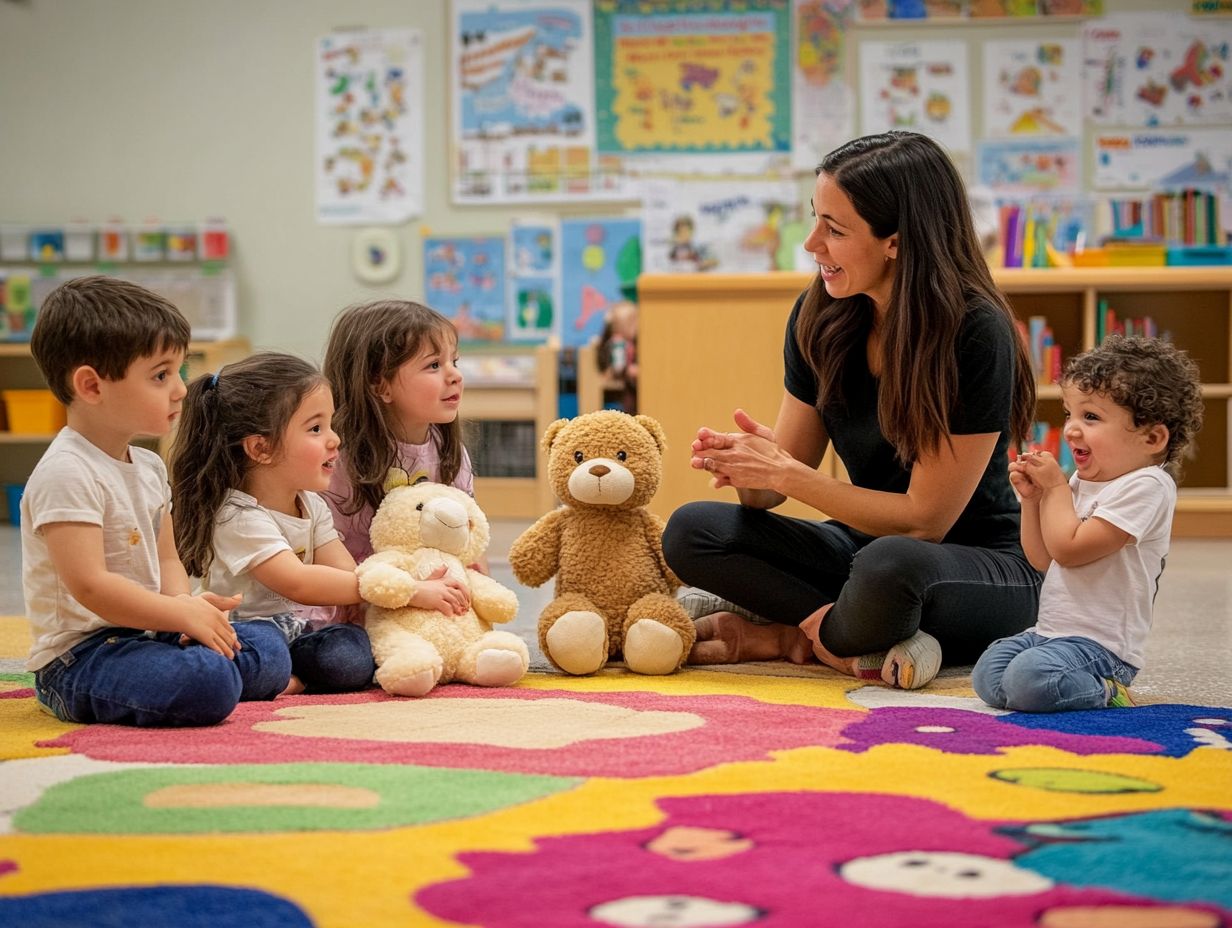
-
What are emotional changes and how do they affect kids?
Emotional changes refer to shifts in a child’s mood, behavior, and reactions. These changes can be triggered by various factors such as stress, puberty, or life events, and can significantly impact a child’s well-being and relationships. Understanding emotional regulation, or the ability to manage emotions, and self-soothing techniques helps manage these changes.
-
How can parents recognize emotional changes in their child?
Parents can look out for signs such as irritability, mood swings, changes in eating and sleeping habits, withdrawal from social activities, and difficulty expressing feelings. It is important to note that these changes may vary from child to child. Being aware of primary emotions like joy, anger, sadness, and fear, as well as secondary emotions like frustration and shame, can aid in recognizing these signs.
-
How can parents help their child cope with emotional changes?
Creating a safe and supportive environment where children feel comfortable expressing themselves is one of the best ways to help them cope with emotional changes. Parents can encourage healthy coping mechanisms such as talking about feelings, engaging in physical activities, or seeking professional help. Modeling behavior and emotional learning are key components in helping children manage emotions.
-
Is it normal for kids to experience emotional changes?
Yes, emotional changes are a normal part of a child’s development. As they grow and experience new things, their emotional reactions may change. Parents should understand that these changes are a natural part of their child’s journey towards emotional maturity. Engaging in coping ahead strategies and problem-solving further aids in this development.
-
How can parents address emotional changes during puberty?
Puberty can bring about a range of emotional changes in kids, from increased moodiness to heightened sensitivity. It is crucial for parents to be patient and understanding during this time. Providing accurate information about the physical and emotional changes they may experience is essential. Discussing self-regulation and behavior expectations can further support children during puberty.
-
What resources are available to help kids cope with emotional changes?
Many resources are available to help kids cope with emotional changes, such as support groups, therapy, and online resources. Parents can reach out to their child’s school counselor or pediatrician for guidance and support. Understanding the importance of communication, empathy, and emotional support can make a significant difference in addressing these changes.
Don’t hesitate to reach out for help!





